Lampeter’s Linear Park
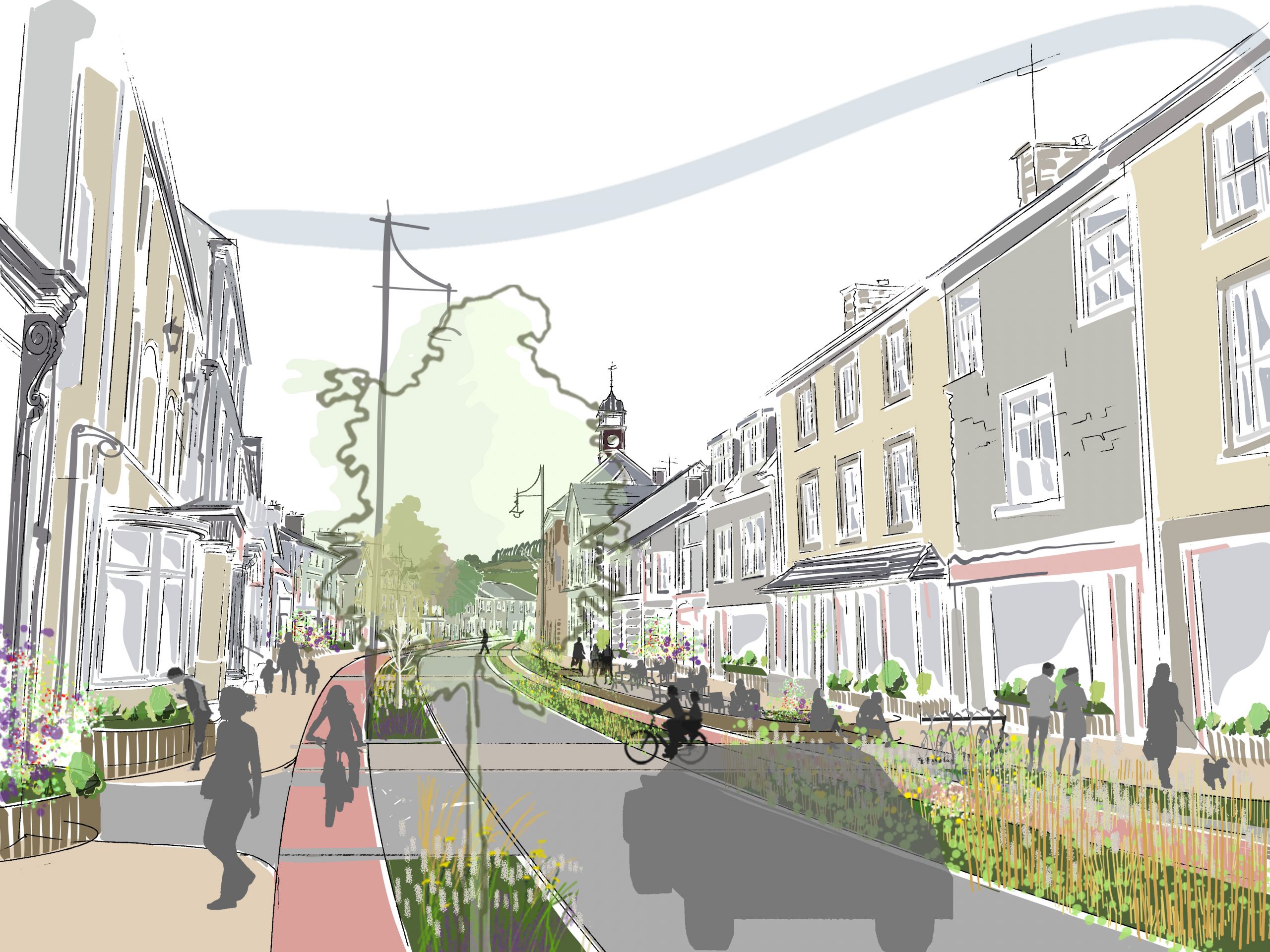
Purpose
To create a ‘linear park’ of green, people-friendly streets through Lampeter. The route would provide a key connection between the university grounds, local schools and green spaces.
Key elements
- Increasing space for pedestrians and cyclists
- Multifunctional urban greening
Delivery
Potential partners: Lampeter Town Council, Ceredigion County Council, local businesses, Ceredigion Disability Forum, Canolfan Tir Glas, University of Wales Trinity St. David.
Indicative costs: £3 – 3.5 million (see Appendix 3 for details on project cost estimates)
Description
Element 1: Increasing space for pedestrians and cyclists
Introducing walking and cycling infrastructure through Lampeter would improve the experience of the town and help to make sustainable ways of travelling the easy option for short journeys in the town centre.
Trialling a one-way system, or a reduction of on-street parking on College Street, Bridge Street and High Street, would make access and movement through Lampeter easier for walking, cycling and wheeling. This would create a landmark ‘linear’ park through the town.
Re-allocating space on College Street, Bridge Street and High Street more permanently could be achieved through separated pedestrian and cycle space. This could be combined with safe dropped kerb crossings at key junctions (in line with guidance from Manual for Streets). Key junctions to target include those at: Harford Square, Co-op, Mount Walk, Church Street, Peterwell Terrace and Ffynon Bedr.
High quality, unified paving around these crossings would create a more pleasant journey for short walks, daily activities and the “school run” for local families.
The introduction of a pedestrian crossing between Market Street and the university grounds would address the existing barrier created by College Street between the town and the university. Widening the entrance to the university grounds, and separating pedestrian and cycling traffic through the site, would create a stronger connection between the university and the town centre. This would enhance the sense of Lampeter as an integrated ‘university town’.
Reducing car dominance in the town centre would create more streetside space where people can socialise. High quality informal seating (ideally integrated with planting) should be introduced along wider sections of roads (including Bridge Street and High Street). This would provide a stronger setting to enjoy heritage features like Harford Square. Some car parking spaces could be reallocated as ‘parklets‘ for the use of local businesses.
Market Street’s newly pedestrianised area could be a focus for seating, community facilities and include space for ‘pop-up’ events. Partnerships with the university and local businesses could be explored to activate Market Street’s public space. Enhancements could include additional seating, bicycle storage and supporting facilities associated with a ‘bike-friendly Lampeter’, a water fountain, solar powered charging points for e-bikes, a bike pump and other maintenance tools. This would give local cyclists and visiting cyclists a place to congregate or stop and explore the local businesses, cafes and shops.
This project proposal recognises that some of these features would need to be brought forward as part of a wider reimagining of how people move through Lampeter, in close consultation with transport planners and local communities.
Bridge Street and High Street
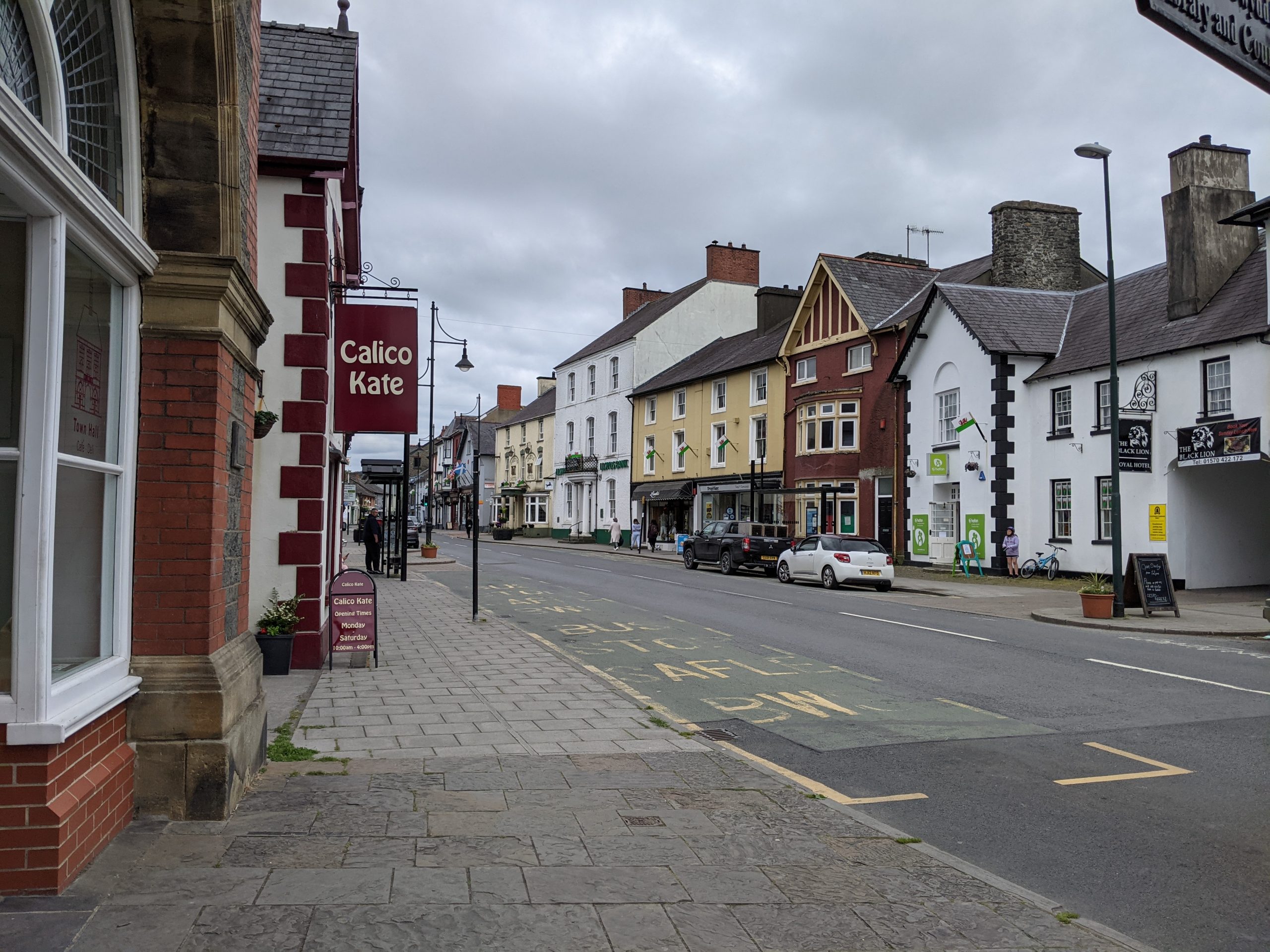
College Street looking towards Market Street
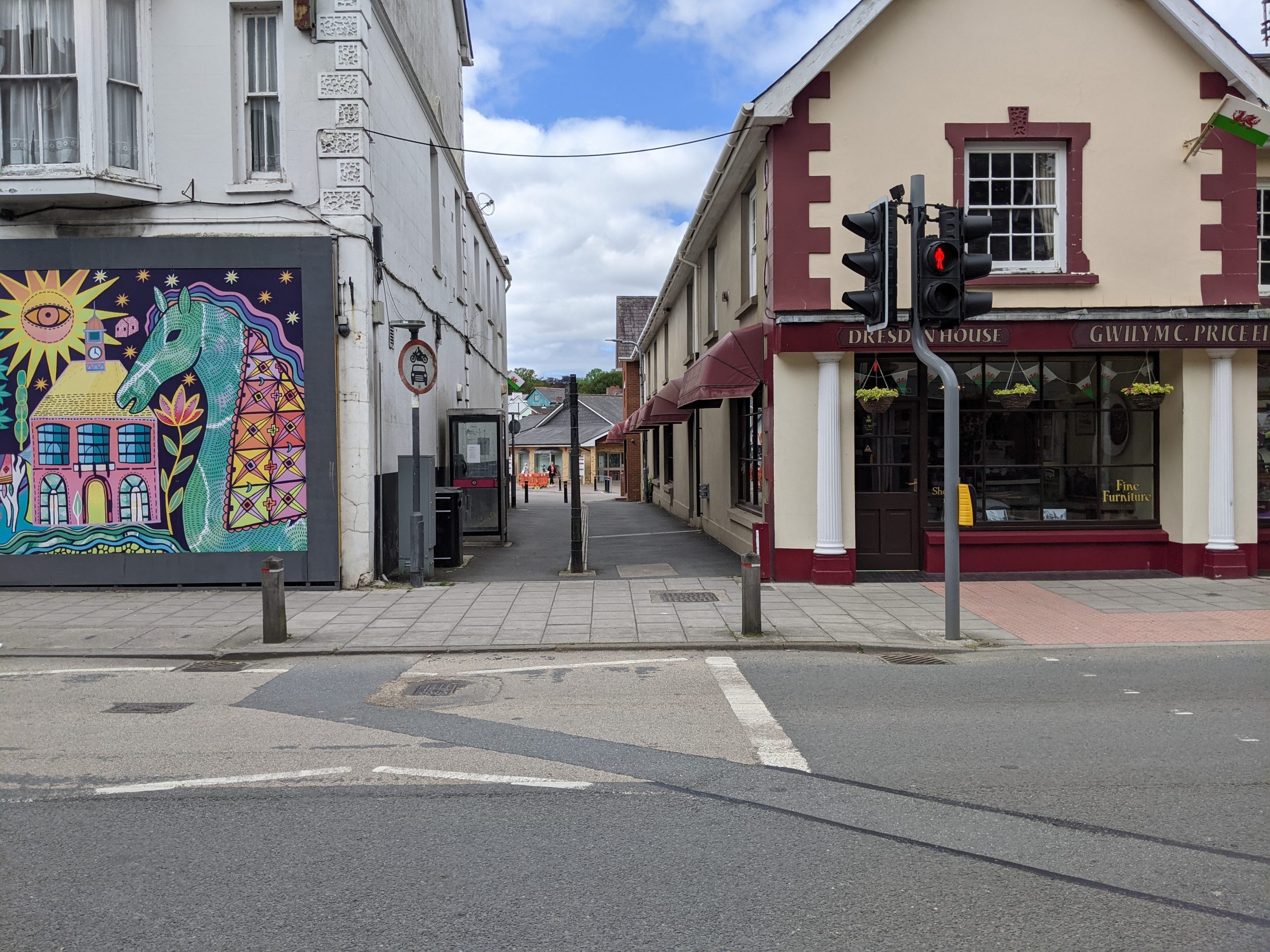
Element 2: Multifunctional urban greening
A programme of structural rain gardens and tree planting (incorporating edible plants) would provide multiple GBI functions in the heart of the town.
On wider roads, street trees and rain garden borders should be introduced in place of kerbs and traditional bollards. This would create attractive green routes through the town while separating vehicles from cyclists and pedestrians. It is important that these features go beyond ornamental value to deliver multiple benefits – primarily by slowing the flow of water runoff in elevated sections of the town centre and creating a wildlife corridor through the urban area.
Urban greening features should be prioritised both along the main vehicle routes through the town and along Lampeter’s network of pedestrian walkways and cut-throughs. Planters or structural planting should be used to enclose roadside seating spaces away from vehicle traffic.
Enhancing pedestrian cut-throughs in the town and introducing attractive wooden signage to aid wayfinding would encourage visitors and locals to make use of the existing web of pedestrian walkways that weave across the town centre. They would also help to improve connectivity between the town centre, the town’s rivers, local green spaces, the parks and the university grounds.
Lampeter’s Incredible Edibles project has already introduced planters outside local supermarkets. These planters contain herbs, salads, edible flowers, vegetables and fruiting plants for people to help themselves to. This could be extended to the town centre with “edible” window boxes displayed on shopfronts, fruit tree species introduced in larger spaces, and water butts to collect rainwater for the maintenance of planters and to address surface water flooding.
Public space for pop-up food events, seed swapping stations and a community food hub could form part of an “incredible edible” food network as part of Canolfan Tir Glas’ new community food hub.
A partnership between the community and university to create a greener Lampeter, led by a resilient local food system, would provide the opportunity to promote Lampeter as a beacon of sustainability and community cohesion and build on the ‘foodie nature’ of the town.
"Incredible Edible" planters outside Lampeter Co-op
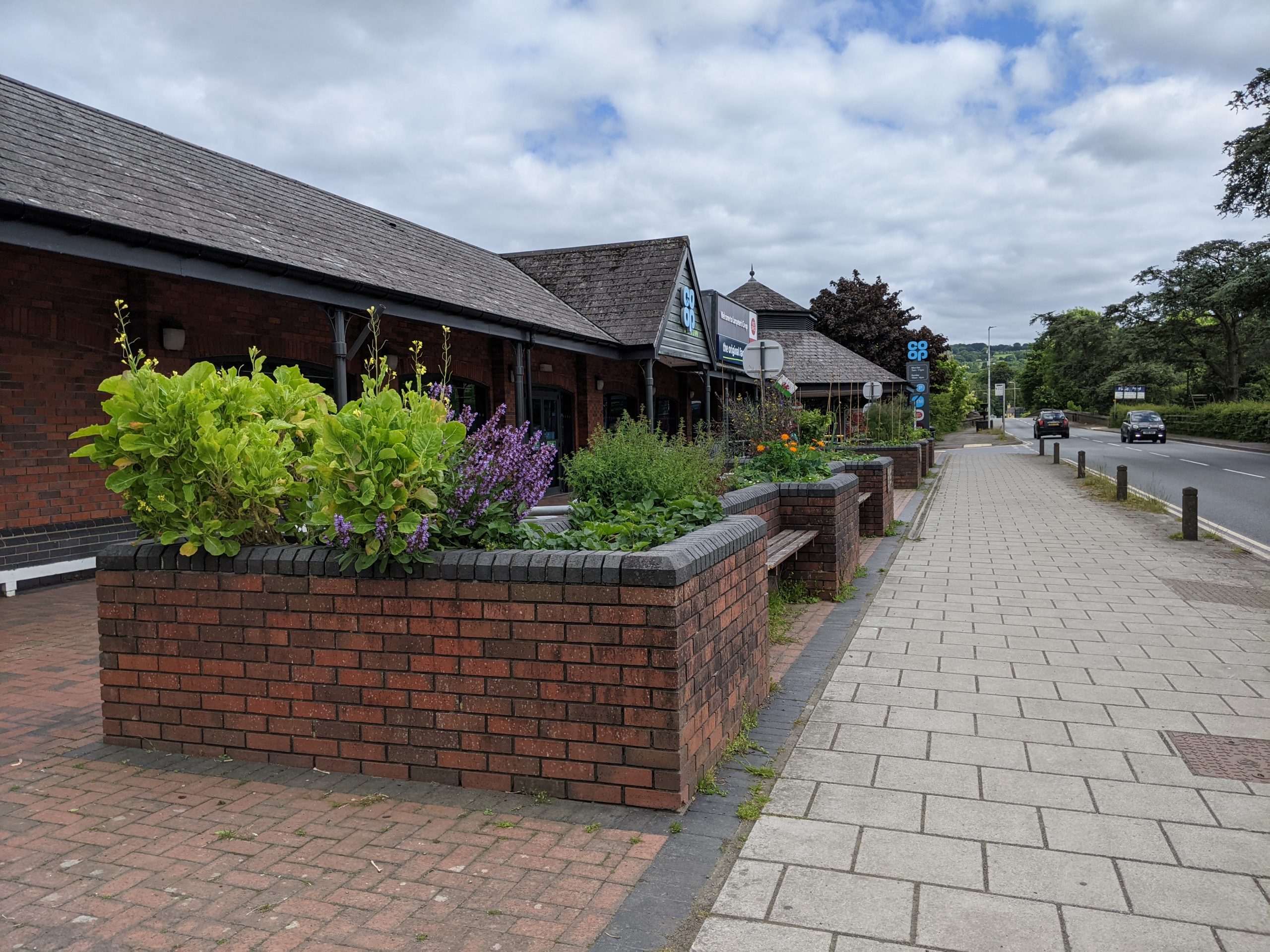
University grounds in Lampeter
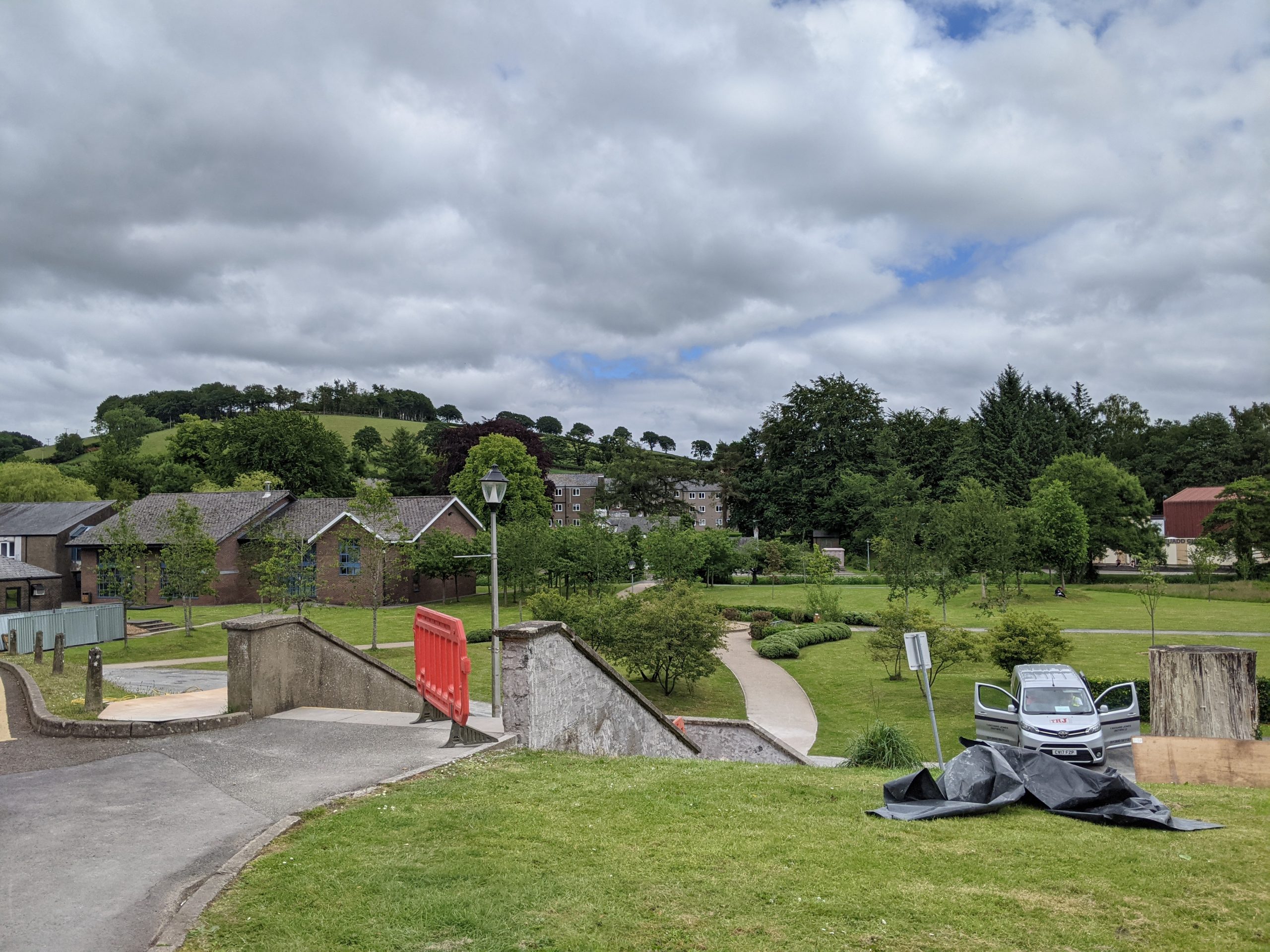
Inspiration from elsewhere
The Connecting Leicester project transformed the layout of roads through the centre of Leicester to create a connected, safe and family-friendly layout. The prominent SuDS features (“rain gardens”) were important in tackling local flood risk. The project also created a linear park along Mill Lane, to connect the retail centre through De Montfort University to the River Soar. The lane is now a public right of way, complete with gardens and seating.
Case study image: Rain gardens within the Connecting Leicester scheme

As part of its Town Deal, Hastings is planning significant enhancements to its town centre public realm, new green connections and multifunctional spaces that will encourage dwell time and promote wellbeing, as an exemplary project in the region. The vision includes walking and cycling infrastructure, cycling “parklets” and, spaces for markets, events, festivals and public art.